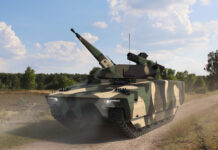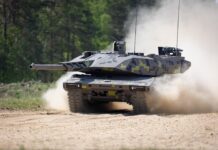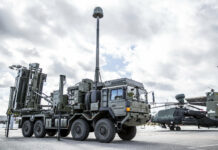Hungary has been investing heavily in military modernisation to enhance its national defensive capabilities and contribute to NATO collective defence. This article provides an overview of Hungary’s major equipment procurement programmes, and how this will shape the country’s force structure going into the future.
Since joining NATO in 1999, Hungary has been working to modernise and restructure its armed forces to meet the alliance’s standards and contribute to collective defence. In 2017, Budapest launched the Zrínyi 2026 modernisation programme, which was aimed at replacing its Soviet-era weaponry with modern systems, and increasing Hungary’s defence expenditure to 2% of GDP by 2024, to be in line with NATO spending targets. Major new procurements include helicopters, tanks, artillery, infantry fighting vehicles, and air defence systems. The Hungarian government’s investment in military modernisation reflects its commitment to enhancing the country’s security and contributing to regional stability.
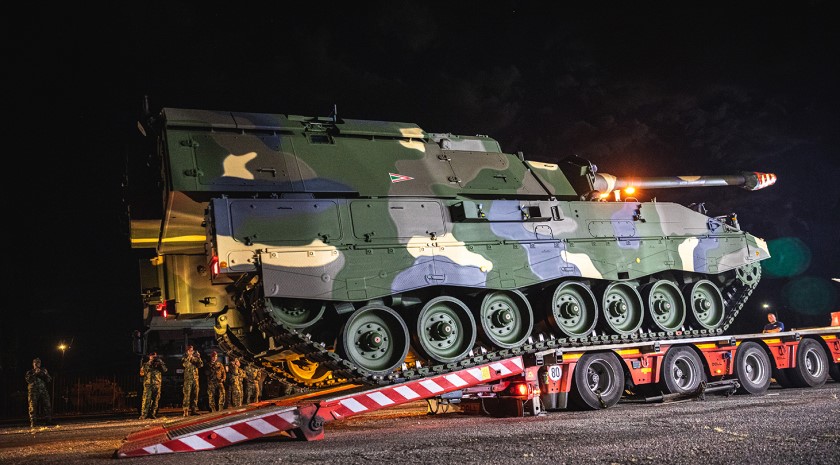
Credit: Hungarian MoD
Major Programme Summary
Hungary’s current major procurement programmes include the following:
1. Leopard 2A7+ Tanks: In 2018, Hungary ordered 44 Leopard 2A7+ (Leopard 2A7HU) tanks from Krauss-Maffei Wegmann (KMW) to modernise its armoured forces. Deliveries are expected to commence later in 2023. In the meantime, Hungarian forces have received Leopard 2A4 (Leopard 2A4HU) tanks as a stop-gap and for training, with the first batch of four arriving in July 2020.
2. PzH 2000 Self-Propelled Howitzers (SPHs): In 2018, Hungary signed a contract with KMW for the purchase of 24 PzH 2000 SPHs to replace its Soviet-era artillery. The first ten howitzers were delivered by late-2022. Prior to their arrival, Hungary’s tube artillery systems primarily consisted of Expal M-08 60 mm and Soviet 82-BM-37 82 mm infantry mortars, along with D-20 towed 152 mm howitzers. Evidently, the country has also recognised the need to improve its artillery capabilities at both the long and short-range segments, as in addition to the PzH 2000, the country is also in the process of obtaining Hirtenberger M12 towed 120 mm mortars.
3. KF-41 Lynx Infantry Fighting Vehicles (IFVs): In 2021, Hungary signed a contract with Rheinmetall for the purchase of 209 KF-41 Lynx IFVs in seven variants (IFV, command, reconnaissance, joint fire observer, mortar carrier, ambulance, and driver training) to replace its ageing Soviet-era BMP-1 and BMP-2 vehicles. The first vehicle was handed over to the Hungarian armed forces on 15 October 2022.
4. H145M and H225M Helicopters: In 2018, Hungary ordered 20 H145M and 16 H225M military helicopters from Airbus Helicopters to replace its ageing fleet of Russian-made Mi-8 and Mi-17 helicopters. The first batch of two H125M helicopters was delivered in November 2019, and deliveries were completed by December 2021. Since then, Hungary’s H125Ms have been undergoing upgrade work to integrate the HForce weapon management system, which will also be rolled out to Hungary’s H225Ms, the first two of which are scheduled for delivery in July 2023.
5. Gripen fighter jets: In 2001, Hungary signed an agreement to lease 14 JAS 39 Gripen fighter jets (comprising 12 single-seater Gripen Cs and two twin-seater Gripen Ds) from Sweden for to replace its outdated Soviet-era MiG-29s. The lease included logistical support and training for Hungarian pilots and ground crew. The first aircraft arrived in 2006 and deliveries were completed in 2007. Under the original agreement, the lease was set to run to 2016, but in 2012, this was extended to 2026. In January 2022, Hungary contracted Saab to upgrade these aircraft to the Mission System 20 (MS20) Block 2 configuration. The upgrade will include improvements to the PS-05/A Mk 4 radar, Link 16 datalink, and introduces Mode 5 IFF, as well as allowing the aircraft to use a wider range of armaments.
6. Gidrán 4×4 protected patrol vehicles: In 2019, Hungary ordered 10 Ejder Yalçın 4×4 (known as Gidrán in Hungarian service), and another 40 vehicles in 2020. He first batch of 10 were delivered in early 2021, to the 25th György Klapka Infantry Brigade. The Hungarian armed forces have a total requirement for approximately 300 such vehicles, and under the second phase of procurement, the remaining vehicles are planned to be built in Hungary.
7. NASAMS Air Defence Systems: In 2020, Hungary signed a contract with Kongsberg for the delivery of two National Advanced Surface-to-Air Missile System (NASAMS) batteries to bolster its medium-range air defence capabilities. The batteries will be integrated with Hungary’s existing air defence network and are slated for delivery in 2023. Additionally, Hungary signed a separate USD 320 M deal for 60 AMRAAM-ER missiles as well as spares and training equipment through the US Foreign Military Sales (FMS) programme.
Hungary’s Big Cats
Perhaps Hungary’s two most noteworthy land programmes are the procurements of the Leopard 2A7+ MBT and the KF41 Lynx IFV, as both represent a serious improvement over what Hungary previously operated.
Hungary’s 44 T-72M1s are being replaced on a like-for-like basis by the Leopard 2A7HU (Based on the Leopard 2A7+ standard), resulting in the tank fleet remaining the same size, albeit undergoing major improvements to firepower, survivability, and mobility. With the Leopard 2A7+, Hungary will also gain two to four possible upgrade paths from either KMW/KNDS or Rheinmetall/RBSL. Additionally, given that Germany has committed to the purchase of the new Leopard 2A8 variant, and KMW has previously also demonstrated a Leopard 2A7A1 variant, the tank family is likely to retain relevance for a good number of decades yet. Despite Germany and France’s plans for deliveries of the first batch of Main Ground Combat System (MGCS) tanks to commence by 2035, deliveries are likely to span a further 10-15 years, meaning it is likely that that Germany will still have the need to operate Leopard 2 into at least the early-2050s.
Likewise, the KF-41 Lynx is set to provide a major step change to Hungary’s mechanised forces, offering improvements in all key areas. Notably, the vehicles ordered by Hungary are due to feature Rheinmetall’s StrikeShield hard-kill APS, providing protection against RPG, ATGM and tank-fired HEAT projectile threats. As well as good protection, Hungary’s Lynxes will also provide the country’s only vehicle-mounted anti-tank guided missile (ATGM) capability, being fitted with a pod of two Spike LR2 ATGMs in the turret.
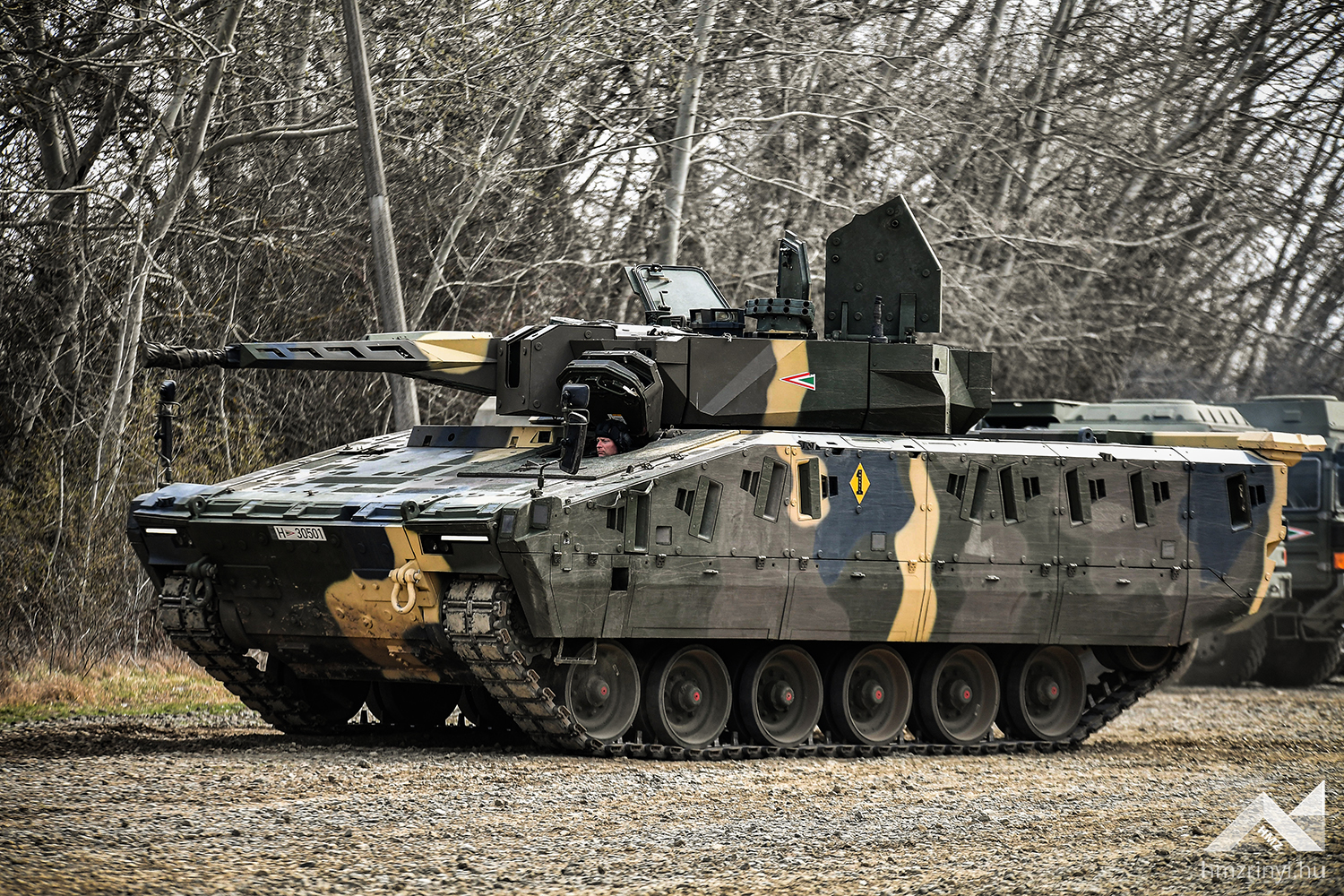
Credit: Hungarian MoD
Under the contract, Rheinmetall will produce the first 46 vehicles in Germany, while the remaining 163 vehicles are to be built domestically at the joint venture based at ZALAZone industrial complex, in Zalaegerszeg. Low-rate initial production commenced in Hungary on 12 January 2023, while full-rate production is scheduled for July 2023. Under current plans, Hungary is expecting to have its first domestically-produced vehicles delivered in 2024, with deliveries complete by around 2030.
Reaching for the Skies
Air defence is a sector where Hungary needed particular improvement, as the country has been broadly reliant on obsolescent 2K12 Kub/Kvadrat family systems to meet its SHORAD/MRAD requirements. Kub/Kvadrat was a capable system by the standards of the late-1960s/early-1970s – it was a mobile medium-range system using solid-fuel missiles and semi-active radar homing (SARH) guidance. The missiles featured an interesting engine design, which used a rocket motor for the boost phase and ramjet engine as the sustainer, with both using the same combustion chamber.
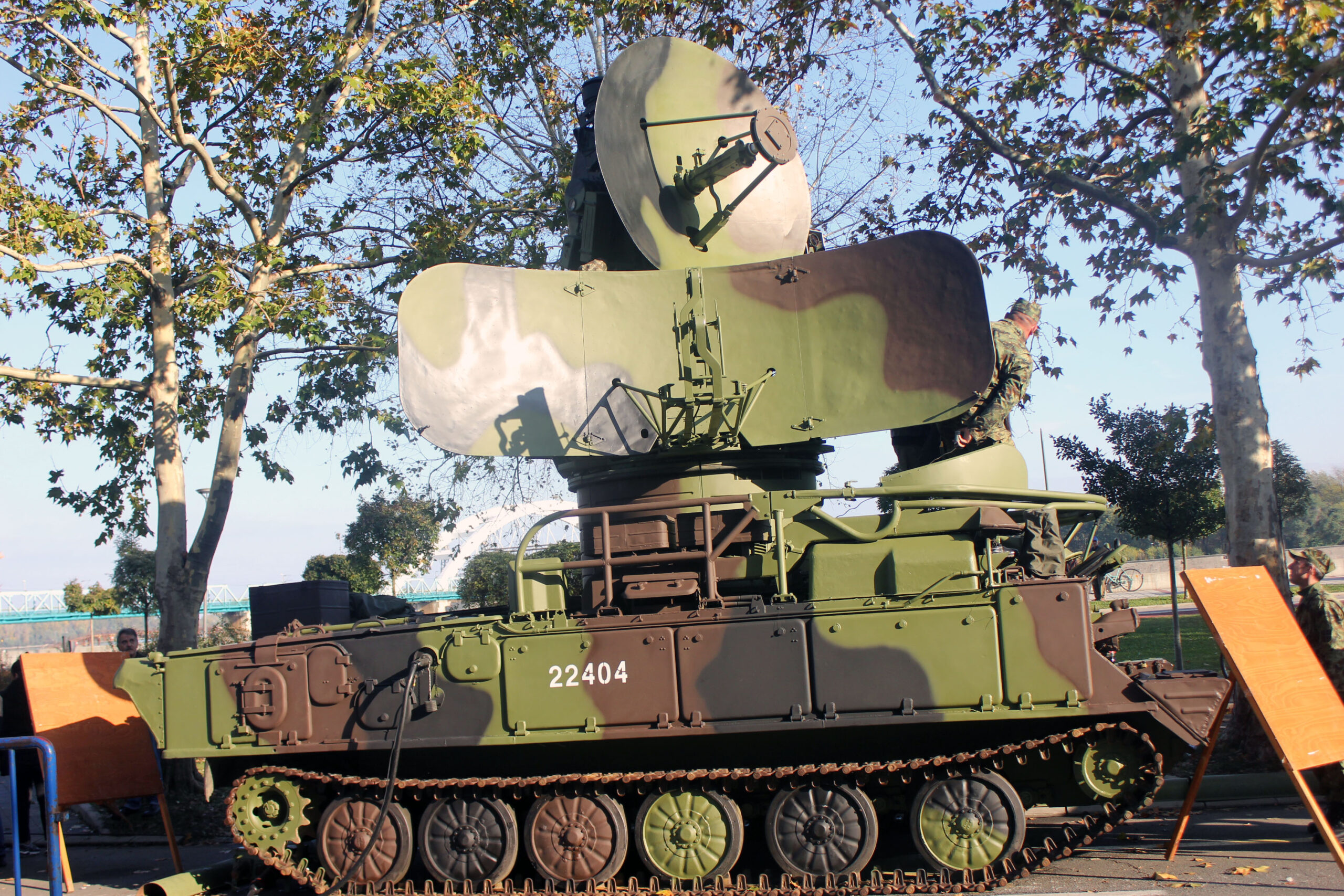
Credit: Srđan Popović, via Wikimedia Commons
However, the system has a number of downsides. Among these, due to their engine design, the Kub/Kvadrat family missiles tended to have a relatively large inner dead zone with a minimum missile range of around 4-5 km depending on the missile variant. This would have made it difficult to conduct many engagements at VSHORAD ranges, and this dead zone also represented a substantial portion of the maximum range, which was in the region of 22-24 km depending on the missile variant. A further problem was that the Kub/Kvadrat systems were only capable of performing one engagement at a time, due to relying on the 1S91 radar vehicle to both track and illuminate targets. This shortcoming of the design was only really corrected with the development of the 2K12M4 Kub in 1978 and later the 9K37 Buk in 1980, both of which added radars to the transporter, erector, launcher (TEL) vehicle, resulting in transporter, erector, launcher and radar (TELAR) vehicles. This reduced dependency on the 1S91 radar vehicle and allowed TELARs to conduct their own target tracking and illumination, thereby permitting multiple targets to be engaged simultaneously. By contrast, the Kub/Kvadrat family (with the exception of the 2K12M4 Kub-M4 variant) were limited to engaging one target at a time, albeit multiple missiles could be guided to the same target.
The acquisition of NASAMS will be a very meaningful upgrade for Hungary, greatly improving its ground-based air defence capabilities. Notably, Hungary is also procuring the newer AMRAAM-ER missile, presumably in conjunction with the more standard and shorter-range AIM-120 C7 AMRAAM. The AMRAAM-ER is based on the body of the Evolved Sea Sparrow Missile (ESSM), modified to use the seeker from an AMRAAM. The AMRAAM-ER is understood to be capable of engaging targets out to a maximum range of 40 km, while the basic AMRAAM, is understood to have a maximum range of 20 km when launched from the ground. Having said this, both missiles are fitted with active radar seekers, permitting the system to conduct multiple simultaneous engagements.

Credit: Kongsberg
Gaps Remain for the Time Being
Despite a good start, Hungary still has some important areas left to address, with some of the more crucial gaps being in the very short-range and short-range air defence (VSHORAD/SHORAD) niches, as well as in rocket artillery.
Currently, in Hungarian service, the VSHORAD/SHORAD range niches are currently served more or less exclusively by the MBDA Mistral-2 missile mounted on the Atlas vehicle-mounted twin-missile launcher, in Hungary’s case mounted on the Unimog 1350L 4×4 Truck platform. The Mistral is a fairly capable short-range missile, notably possessing a proximity fuze – which is not always a given for MANPADS missiles, notably this feature was absent from Stinger variants prior to the FIM-92J/K models as well as Igla variants prior to Igla-S. As such, it would be more suited to engaging UAVs than some other MANPADS, but even so, the weapon system as a whole isn’t suited to dealing with large quantities of small UAVs and loitering munitions, which is where the battlefield is trending currently. However, Hungary appears to already be indicating that it intends to further flesh out its GBAD capabilities, having joined NATO’s ‘Modular GBAD’ initiative in 2020, which provides a multinational framework for the development and procurement of air defence systems in the VSHORAD/SHORAD/MRAD spectrum.
Rocket artillery is another crucial sector where Hungary could benefit from investment into, as it currently lacks any such systems. The war in Ukraine has repeatedly highlighted the immense impact which can be made by artillery on the modern battlefield, particularly guided artillery. The war has further shown how important it is to have meaningful quantities of both tube and rocket artillery when the airspace is heavily contested by GBAD, as they become some of the only reliable means to conduct long-range strikes deeper behind the frontlines. Hungary has a wide range of options to choose from in this sector, with modern examples available from Brazil, India, Israel, Korea, Serbia, Turkey, and the USA. Here too, Hungary has been signalling its interest in obtaining such a system, with local press reporting in February 2022, that Lieutenant General Romulusz Ruszin-Szendi, the Commander of the Hungarian Defence Forces, and Gáspár Maróth, the Government Commissioner for Defence Development, had observed a firepower demonstration for a rocket artillery system in the United States. While the papers did not name the system specifically, it has been widely understood to refer to HIMARS.
As a whole Hungary’s modernisation programme appears to be broadly moving in the right direction, and the leadership seems to already be in the process of resolving some of its armed forces’ most pressing capability gaps. Alongside procurements, the country has been investing in its industrial base, and as it begins to integrate its new systems, it will be interesting to see how the country manages to sustain momentum on the domestic industrial side as well.
Mark Cazalet








